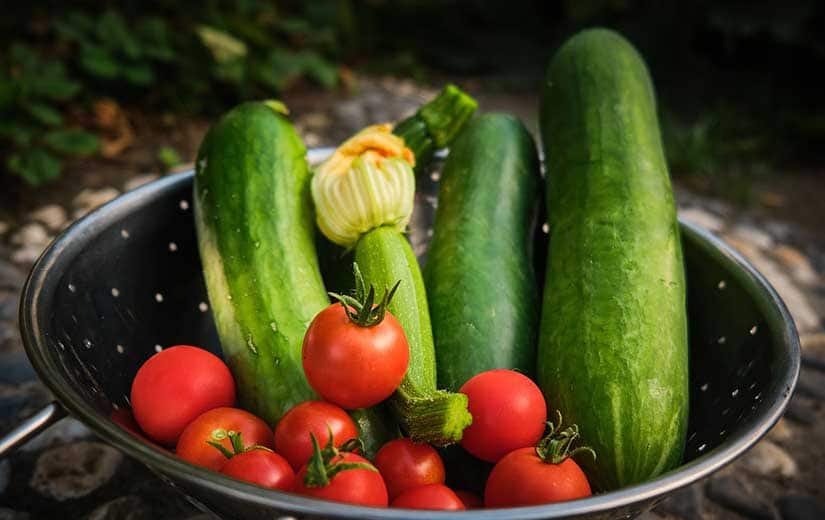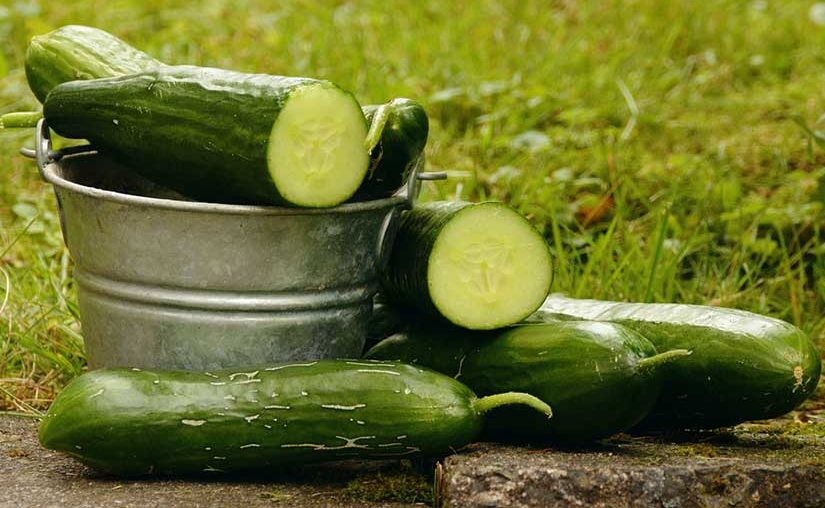Cousin of squash and melon, cucumber is a herbaceous plant whose fruit is pleasantly refreshing in summer. It is particularly succulent when it is firm and waterlogged. The ideal? Arrange your own cucumbers in the garden, and eat them well fresh!
When to sow cucumbers?
Cucumber likes warm soils: it needs a earth to 12 ° C minimum to germinate. The ideal sowing time is May / June. The fruits then mature in August. To advance the harvest in July, it is possible to carry out a hot sowing from the March / April period.
Which varieties to choose?
Originally from Asia, cucumber was first introduced in France at the court of Louis XIV. It is now considered the most widespread culture around the world. The appearance and flavor of this fruit-vegetable vary radically depending on the variety.
Dutch cucumber
Dutch cucumber is a relatively new variety, since it was born in the 1950s in the Netherlands. Recognizable by its appearance – long, smooth, straight and adorned with a deep green – it is the most widespread, because it has the distinction of not being bitter.
The spiny cucumber
The spiny cucumber owes its name to the spines that bristle its skin. If they give it a pungent appearance, they are nonetheless harmless. Quite short and stocky, it evokes a gherkin. If it is particularly suitable for sunny areas, its flesh is not devoid of bitterness.
The old varieties
A very old variety, the Généreux owes its name to its remarkable productivity. It is also appreciated for its sweet flavor, without bitterness. Its fruits can reach 25 cm. They can however be harvested when they are small, and prepared and consumed in the manner of pickles.
You can find many other old varieties with original appearance and flavor. Among them :
- The Alexander Kaiser: a brown cucumber, embroidered, with white flesh;
- Lemon, a very productive variety which owes its name to its very pale yellow berries, rather round;
- Along China, which is preferably grown in lattice, which allows its fruits to flourish fully up to sometimes 1m in length.
What to do before sowing cucumbers?
Cucumber will appreciate a rich land, well amended. He sows himself in a well worked earth, loosened over at least 30 cm deep, eliminating roots and pebbles. Grab the soil and level with a rake, breaking the clods and eliminating even the smallest pebbles.
How to sow them?
Sowing in place
- Prepare holes 30 cm deep with a spacing of 80 cm to 1 m;
- At the bottom of the hole, add compost or, alternatively, organic matter (mowing or leaves);
- Fill the hole with a mixture of earth and potting soil;
- Bury 3-4 seeds and tamp well;
- Water in fine rain, using a watering can with an apple.
Wait until the seedlings have at least 3 leaves to lighten.
Hot sowing
It is possible to sow in individual buckets:
- Fill the buckets with potting soil;
- Place 3 seeds in the bucket, in 3 separate holes, then tamp.
The seeds must be watered in fine rain. It is also possible to place each bucket in a cup filled with water.
The ideal temperature for a hot sowing is 20 ° C. The buckets can be installed in a greenhouse or under a veranda, or even behind a window. To maximize your chances of success, you can recycle old plastic bottles: cut the bottle in half and place the top over the bucket.
When placing in the garden, place compost or humus in each hole.
Where to plant cucumbers?
The cucumber dreads excessive moisture, source of rotting. We will therefore reserve him a well drained plot.
Cucumber will appreciate the direct vicinity of carrots, beets, beans, kidney beans, peas and basil. On the other hand, avoid growing it near rosemary, potatoes or sage.
How to maintain them?
To be healthy – and for optimal performance – the cucumber needs to be carefully trimmed:
- Pinch over the 2th leaf, to give birth to 2 stems;
- Pinch after the 4th leaf of each stem.
Then always prune the branch above the fruit.
How to water cucumbers?
If cucumber is readily consumed in juice or soup, it is mainly made of water. No wonder it requires regular watering. He is not afraid of stagnant water or splashing water on the leaves. As soon as you have clarified the sowing, it is advisable to make basins at the foot of each plant, and to water with delicacy, by positioning the pipe or the watering can near the stem, under the leaves. The ideal? The drip, of course!
Harvesting cucumbers: when and how?

Depending on the variety, the fruits are harvested 3 to 4 months after sowing. To fully benefit from its flavor (and its minerals!), It is best to harvest the cucumber when it is firm and it displays a uniform color (10 to 15 days after flowering).
Cucumbers should be taken preferably in the morning, using a sharp instrument – knife or chisel – to make a clean cut. The cucumber can be stored for 5 to 7 days in the refrigerator, in the vegetable compartment.
Cucumber diseases and what to do?
Powdery mildew
Cucumber is particularly vulnerable to powdery mildew. This mushroom is common in the garden. This kind of mold, white in color, quickly invades the leaves of the cucumber. Mildew loving the combination of heat and moisture, it develops mainly in spring and late summer. But other factors can facilitate its proliferation.
We therefore act in the first place preventively, adopting some good habits:
- Plants well spaced;
- No stagnant water;
- No splashes of water on the leaves.
If the disease appears, remove all affected leaves and burn them. When the disease is not contained, application of a fungicide is required. We then favor natural treatments:
- Baking soda: mix 25 gr of baking soda in 5 L of water, add 1 teaspoon of black soap or vegetable oil and spray on the plants (renew the treatment in case of rain);
- Milk: Mix ½ L of milk with 4.5 L of water and spray once a week.
Mildew
The cucumber produces dense foliage. The combination of shade, heat and humidity produces a favorable environment for the development of late blight. The most effective treatment is the Bordeaux mixture, which is sprayed as a preventive measure in the spring and then throughout the summer, especially if it is rainy (count once every 15 days). If your plants are still suffering from a mildew attack, you can proceed to a treatment:
- Remove any infected part of the plant;
- Mix baking soda in water (1 tablespoon per liter) and spray on the plant.
Even more plantations:









